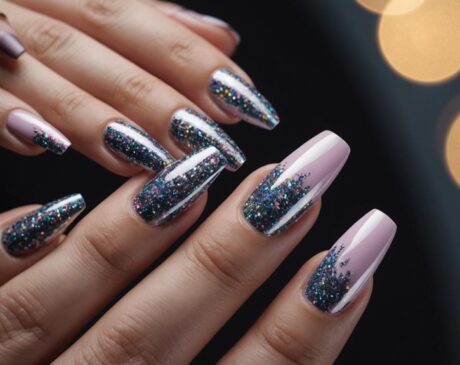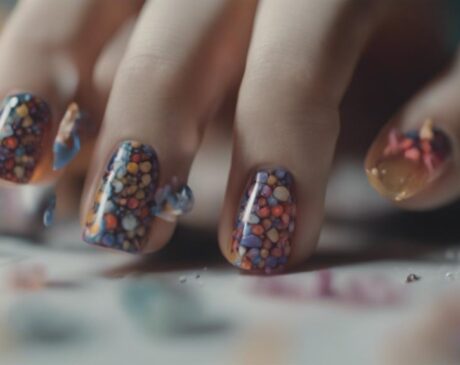Are Press-On Nails Worse Than Gel?

Maintaining beautiful nails has become an important part of many people’s beauty routines. With the rise of nail technology, individuals now have a variety of options to choose from. press-on manicures and gel nails are popular for their convenience and ability to achieve salon-like results at home.
Understanding press-on Nails
press-on nails, also known as faux nails or gel nails, are pre-formed nails that can be easily attached to your natural nails using an adhesive or glue. These nails are available in a variety of shapes, sizes, colors, and designs, so it’s easy to find a style that matches your preferences.
Benefits of Pressed Nails
Convenient and easy to use
One of the main benefits of press-on nails is convenience. They can be applied in minutes without the need for salon appointments or lengthy manicure sessions. With a press-on manicure, you can create beautiful, polished nails in the comfort of your own home.
Affordability
Compared to gel nails, press-on nails are a more cost-effective option. They are relatively inexpensive and, if properly maintained, can be reused many times. This affordability makes them a popular choice for individuals on a budget or for those who like to change their nail style frequently.
Versatility and diversity
press-on nails are available in a variety of designs, colors, and shapes to suit every taste and occasion. Whether you prefer a classic French manicure, a bold and vibrant pattern, or intricate nail art, you can find a press-on manicure to match the look you want. The versatility of a press-on manicure allows you to experiment with different styles without committing to a long-term solution.
Disadvantages of press-on nails
Durability and longevity
While press-on nails offer convenience, their durability and longevity can be an issue. They are not as durable as gel nails and may not be able to withstand strenuous activity or extended wear. press-on nails are more likely to chip or loosen, requiring frequent maintenance or replacement.
Limited professional finish
Although easy to use, press-on nails may not provide the same professional finish as gel nails. The adhesive used to secure press-on nails may leave visible lines or gaps, and the edges of artificial nails may not blend seamlessly with your natural nails. For those with a keen eye for detail, this slight lack of precision may be noticeable.
Introducing gel nails
Gel nails, also known as gel polish manicures, are a popular nail art option offered by professional salons. Gel nails are created by applying gel polish to natural nails and then curing them under UV or LED lights. This process creates a long-lasting glossy finish that is very durable.
Benefits of gel nails
Durability and Longevity
One of the significant advantages of gel nails is their outstanding durability and longevity. Gel polishes are known for their ability to withstand daily wear and tear, making them a suitable choice for those with active lifestyles. Gel nails can last for weeks without chipping or losing their shine, thus providing a long-lasting manicure.
Professional Finish
Gel nails provide a professional finish that is often difficult to replicate with press-on nails. The application process involves multiple layers of gel polish, resulting in a smooth, flawless look. The gel polish adheres tightly to the natural nails, giving them a natural and neat appearance.
Disadvantages of gel nails
Price
Compared to press-on nails, gel nails can be more expensive. The cost of gel polish, as well as the professional application and removal in the salon, may add up. However, it is important to consider the durability and longevity of gel nails, which may offset the initial investment.
Expert application and removal
Applying and removing gel nails requires expertise and specific tools. While press-on nails can be easily applied at home, gel nails usually require a professional manicurist. Gel polishes need to be properly cured under UV or LED lights, and the removal process involves soaking the nail in acetone. Improper application or removal can result in damage to natural nails.
Potential Nail Damage
A potential downside to gel nails is the potential for damage to the nail. The removal process can weaken natural nails if done incorrectly or too often. It is important to follow proper nail care practices and allow your nails time to recover between gel manicures to minimize the risk of damage.
Choosing between press-on and gel nails
When choosing between press-on and gel nails, there are several factors to consider. If convenience, affordability, and versatility are your top priorities, a press-on manicure may be the ideal choice. On the other hand, if durability, professional finishes, and long-lasting results are important to you, gel nails may be a better option for you.
Ultimately, the decision depends on personal preference, lifestyle, and budget. It is important to weigh the pros and cons of each option and then choose the one that meets your needs and preferences.
Both press-on nails and gel nails have their pros and cons. Press-on nails are convenient, affordable, and versatile, while gel nails offer a durable, professional finish and long-lasting results. By understanding the features of each option, you can make an informed decision based on your personal preferences and requirements.
Frequently Asked Questions
Can I reuse press-on nails?
Yes, if properly maintained and cared for, press-on nails can be reused many times.
Can gel nails damage natural nails?
When applied and removed correctly, gel nails will not cause significant damage to natural nails. It is critical to follow proper nail care practices and allow your nails time to recover between gel manicures.
How long will gel nails last?
Gel nails can last for weeks without chipping or losing their shine, thus providing a long-lasting manicure.
Can I apply gel polish at home?
While it is possible to apply gel polish at home, it is recommended to seek professional application at a salon for the best results.




